Serious birders possess two main traits: a love of birds, which I share, and a love of organized lists, which I most definitely do not.
Birding is a popular hobby (arguably the most popular hobby) both in my profession and among Nature Conservancy members. I’ve had ample opportunity to watch birders watching birds. I am struck by their mania for anything with feathers. I am also struck by their mania for organization and lists. Trips are planned to maximize sightings. Big days and big years are plotted with the efficiency of military campaigns. Sightings are logged on spreadsheets and apps.
I lack this level of organization, as anyone who has visited my office will attest. I view spreadsheets much as I do dental visits: tolerable and at times necessary but hardly something to build your free time around. I like identifying birds, but ticking off species after species after species day after day loses its appeal quickly. I’m too easily diverted by sightings of mammals or fish or historic sites.
A guide in Brazil’s Pantanal once told me that he had a group of birders who got impatient because he spent too much time showing them a jaguar. A jaguar. I lack that level of discipline and focus. I also would frankly rather see the jaguar.
The obsessive side of birding makes for entertaining reading, and even humorous movie material. It can also be daunting for potential new birders. I recall another outing with a local bird club, where I found myself in a car for a day with a guy who delivered a non-stop monologue, Rain Man style, on warbler identification. As he droned on about wing color variation, for two hours, I could understand why someone might want to take up golf instead.
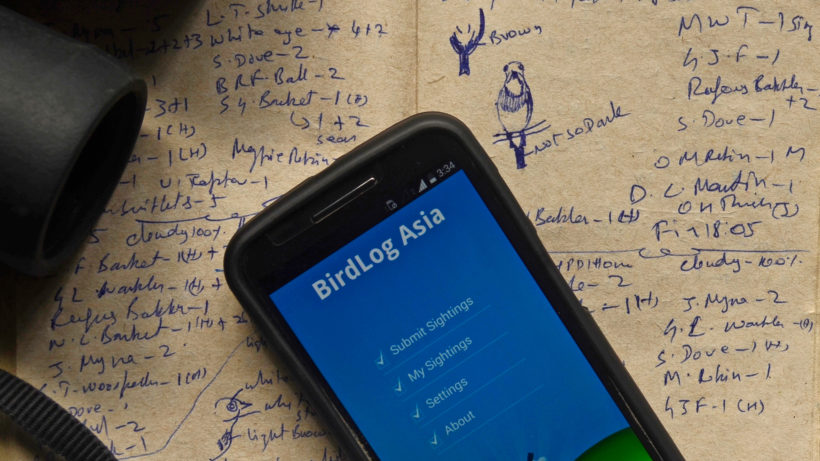
But fear not, haphazard birders. You do not have to launch big years or detail your sightings on spreadsheets. Here are some ways to enjoy all the fun of birding – without the need for list making. And I’d love to hear from readers: What’s your approach to birding?
Observe Birds
Yes, I know, it’s stating the obvious, but it bears repeating: birds are cool to watch. Not just to identify, but to watch. One of the reasons birding is a more popular pastime than mammal watching (much as I hate to admit it), is that birds are generally easy to observe. It also means you can readily watch them go about their daily lives: feeding, roosting, hunting, nesting, mating and more. Even common species exhibit fascinating behavior if you spend some time with them.
Go to the local city park and watch the annual soap opera that is mallard mating season. Observe, really observe, an American robin building a nest. Or a pileated woodpecker chiseling a hole. Or a Cooper’s hawk hunting the songbirds at your feeder. There’s a lot of drama playing out, right outside your door.
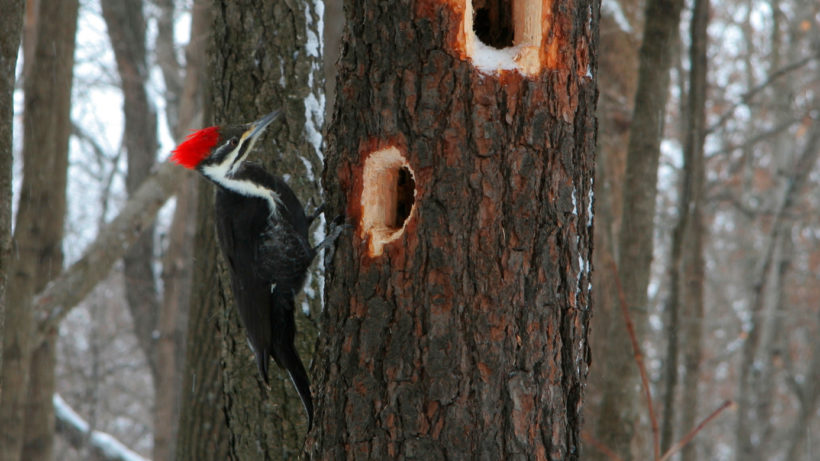
Learn the Neighborhood
Identifying birds is enjoyable, and the easiest way to start is by learning the birds in your local neighborhood. You can keep a list, or not, but the goal here is to know and observe your feathered neighbors.
My wife keeps a little notebook marking when we see some key species, like spotted towhees and Lazuli buntings. She stows it by our window. This can be an informal way to track when species show up each year.
It adds fun to a stroll around a park or neighborhood to know the birds you regularly see. You’ll almost assuredly notice more than you ever thought were there.
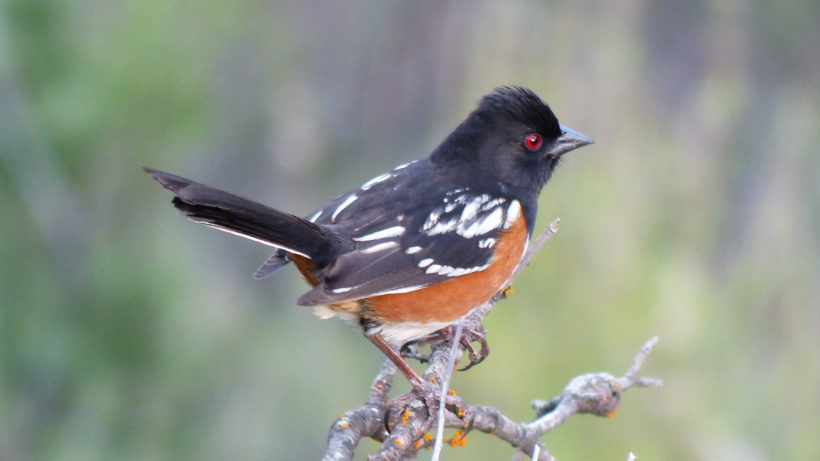
Enjoy Bird Spectacles
Many birding trips are organized to pack as many species sightings in as possible. This often means lots of driving, and little sleep. That can be a lot of fun, at least for some. But you could also organize a trip around seeing a natural spectacle, rather than seeing different species. Large concentrations of birds are some of the most awesome and inspiring natural wonders. You need time to take it in, not rush from one sight to the next.
You will probably see plenty of species as you watch the annual raptor migration at Hawk Mountain, Pennsylvania, but a big part of the experience is just taking in the totality of the migration. Other examples include the congregation of sandhill cranes on the Platte River, sage grouse and prairie chicken mating displays, sea bird nesting colonies and waterfowl and shorebird migrations. You can appreciate any of these even if you’ve never cracked open a field guide.
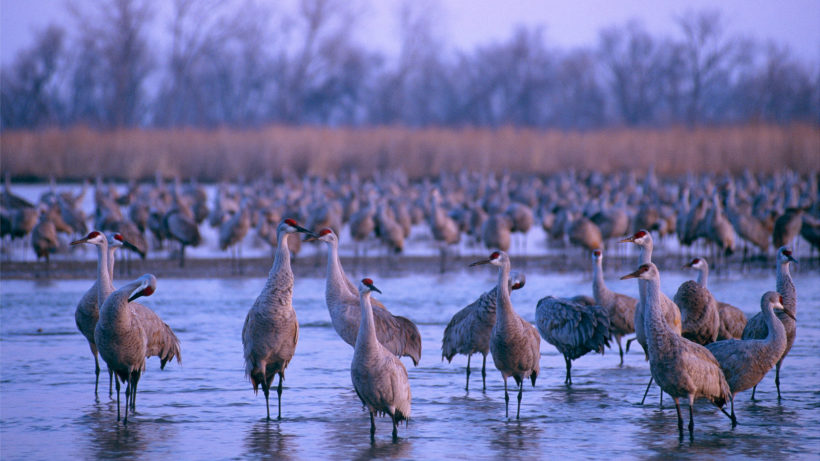
Learn Bird Songs
Serious birders have a keen grasp of bird vocalizations (and some even count birds they have heard as part of their list). But anyone can learn to identify the morning and evening chorus. It adds another element to enjoying birds.
There are apps that can help. Because I have a thing for field guides, I recently picked up The Backyard Birdsong Guide by Donald Kroodsma (Cornell Lab of Ornithology). It is an audio field guide in book format, and a very enjoyable way to learn the common birds around you.
Narrow Your Goals
Any serious birder will tell you that setting goals is a big part of the fun. But if a goal like a “big year” seems too big, just narrow your focus. You could set the goal of seeing an elusive local species. (For me, this year I’d like to see a merlin, a bird often reported locally that I’ve never seen). Or you could set a longer-term goal of, say, seeing all North America’s owls. This would be tremendously challenging but would require a different approach than having a big year.

I have a special interest in observing and identifying waterfowl. I’m always on the lookout for new duck species. While I still struggle with warblers, I can tell you what duck just flew by, even if it is 10 minutes before dawn (admittedly, this is due to my love of waterfowl hunting, which also requires bird identification skill).
Spot Local Rarities
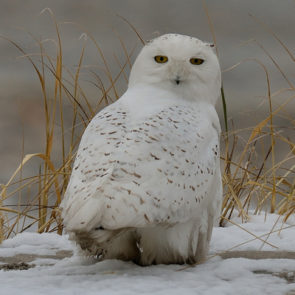
When a rare bird shows up, it’s common for avid birders to immediately book trips and converge on an area. That is an aspect of birding that many criticize. But “critter quests” are fun, and you don’t have to jet across the continent to do it. When a local rarity shows up – and local birding clubs and social media groups often send alerts – it can be tremendous fun to seek out that bird, even if you’re not a lister. A lot of times you’ll be rewarded with a beautiful species you would not normally see.
I’ve recently seen a northern hawk owl and a snowy owl, both unusual sights in Idaho. I’ve also had some outings that have not resulted in seeing the quarry, but it’s still fun just to be out there looking for something specific.
Please be sure to always respect the birds, people and property when you’re on your bird quest.
Participate in Citizen Science
Whatever your birding interest, you can make your observations count. Gathering bird observations from birders has become an important way for researchers to track conservation trends. Amateur sightings have documented the spread of northern cardinals north, and the invasion of non-native Eurasian collared doves across the country, among many other trends.
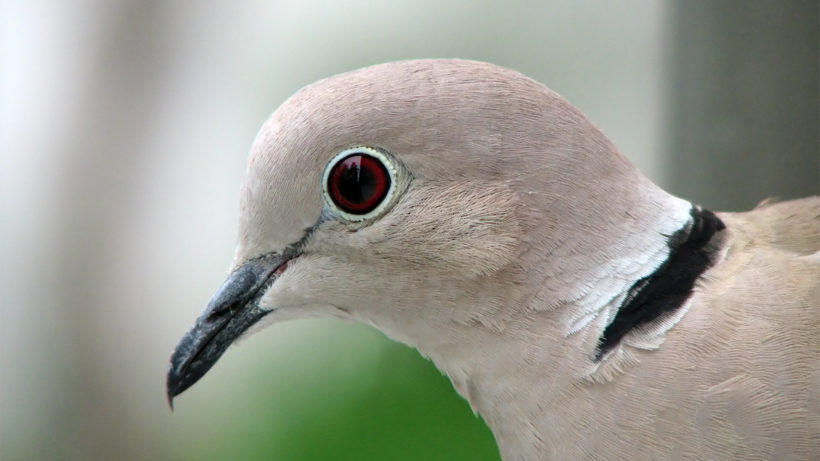
The Cornell Lab of Ornithology’s Great Backyard Bird Count and Project FeederWatch are two of the most popular projects. Both are very easy to do, even for those of us who are a bit disorganized. When I count for the Great Backyard Bird Watch, I note my sightings in a notebook, then note that in the GBBC’s user-friendly web site – no spreadsheets required. Other citizen science projects merely ask you to note when you’ve seen an American robin or hummingbird.
Many local nature centers, state fish and game departments and bird observatories offer opportunities to assist with bird banding, censuses and other activities. This is a great way to see birds up close and help conservation at the same time.
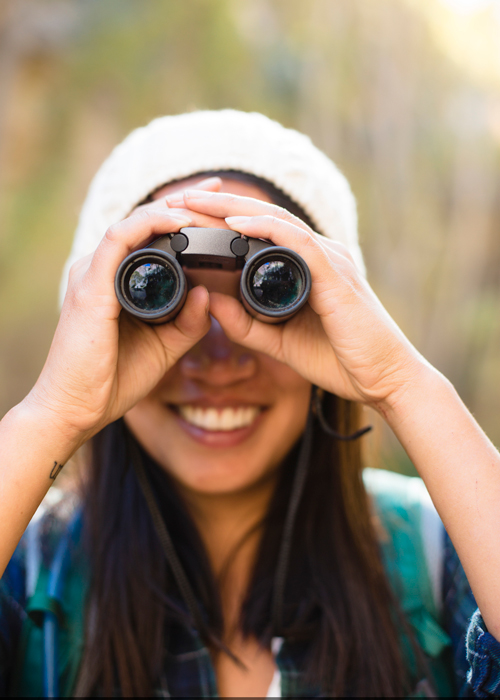
Incorporate Birding Into Other Activities
Observing a serious birder can give the impression that the activity demands foregoing all else, not excluding eating and sleeping.
I’ve found that birding actually goes well with other activities. You can identify birds whenever you are outdoors. In fact, I’ve had some of my most memorable sightings while fishing, hunting, hiking and cross-country skiing. You can simply pack along a field guide on your trip, and you’ll be surprised at the species you see, simply by being aware. And you can still enjoy a nice meal and cold brew at the end of the day.
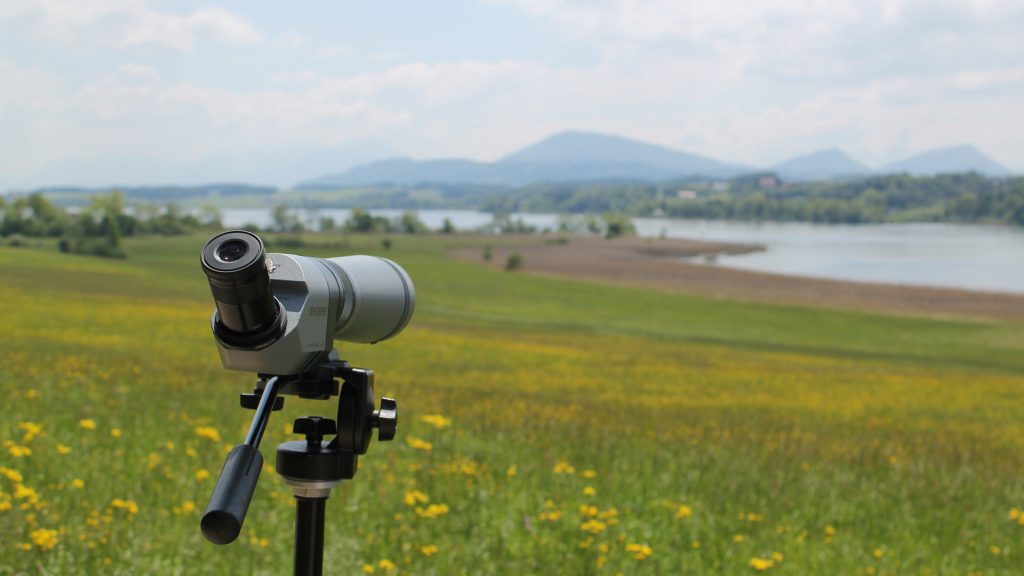



I love birding, but do not keep lists either. I love observing the birds and find that bird walks are very soothing as I forget about the rest of the world and my problems for awhile. I also love to go on day hikes and enjoy seeing any kind of wildlife including lizards, frogs, insects, etc. I went on an Audubon birdwalk awhile back and was embarrassed by one of the leaders who shushed me because I got excited over a huge lizard I saw at the trail head. I am very much aware of birding etiquite and didn’t disrupt anyone or scare away any birds as we had just arrived at the trail head. I never went on another walk with that group. I had been a National Audubon member and was also a member of El Dorado Audubon in Long Beach, Calif. I fit in better with the Long Beach group because they all seemed to like to stop and observe other wildlife too, such as a beautiful moth or butterfly along the trail. I like going in groups for birdwalks, but unfortunately where I live now there are no birding groups nearby .
I saw my first Purple Martin today!
My husband and I spend Sundays combining our two favourite things, Bird Watching and searching for Cars in Barns. We drive up and down country roads looking for rusty dusty old muscle cars under tarps in crumbling sheds and looking for birds I don’t see in my yard or at work.
I rarely photograph anything, I just scribble in my bird book.
Really enjoyed this article. I, too, am a list-averse-avid-birder. My various bird guide books have notes, markings and dates when I’ve actually seen a particular bird and also when I’ve observed interesting behavior of a bird or birds. This past winter I was entranced when a huge flock/group of adorable bushtits (approximately 45), descended on my suet feeders. This sweet, noisy and gregarious group stayed for over 15 minutes consuming suet. They just seemed to be enjoying the cold but clear day and feasting on an easy meal. It was a great for me too, watching these lovely little birds from my window and drinking a hot cup of coffee.
I started watching and identifying birds as a kid, wandering through the neighbor’s yards with binoculars. I like being able to identify them by sight and song. The closest I’ve ever come to list-making is putting a small pencil mark on the pages in a bird book to mark the ones I’ve seen.
I only have a few birds on my lifetime “gotta see one someday” list, which I just keep in my head. Most I have stumbled on just being outside enjoying nature, hiking, kayaking, observing all kinds of animals, etc. The last remaining bird on that list is the painted bunting. I live in NC now, so there is a chance that I could spot one on a visit to the coast some day.
The thing I enjoy most about bird watching though, is their behavior. Chickadees seem nearly fearless while the great blue heron is extremely skittish. Brown thrashers build their nests low in bushes and frequent the ground while mocking birds like to sing and put on a show atop a tree or a house. House sparrows sometimes fight fiercely over nesting boxes, even going as far as pulling out another bird’s tail feathers. These types of observations are the most interesting of all to me.
Great story. Recently I was characterized as ‘somewhat’ of a birder by a friend who had done a big year. I guess I showed my cards when I told him of my pleasure watching a flock of coots foraging at Sacramento Valley NWR. They have such amazing feet and the way they move is fascinating.
Some of my fondest memories from childhood are from birding with my family. Chilled to the bone on a bluff at dawn at the Great Salt Plains in Oklahoma as Sandhill Cranes flew over at dawn. But there was always time for bugs, fossils, wildflowers.
One of my fondest memories as an adult was a day at Cape May just after a storm. People were running around like crazy trying to see more birds. I was exhausted from a long drive and sat for a long time on a deck. I saw 13 new species of warblers, who were dropping exhausted onto the branches in front of me, some so close I could pick out individual feathers with my binoculars. Wow!
I am embarking on my biggest bird trip yet in about a week, to South Africa. I am excited about the prospects of all sorts of new birds, and trees, insects, snakes, mammals, ….. I hope there not a lister aboard who tries to rush a lion sighting.
Recently I commented to master gardener friends that the plants should be enjoyed. Stressing to identify every plant or bird takes the joy out of the experience. We should just be in the moment and not working to put a name on everything.
Right on and well done!
an 80 y/o ‘birder’
I wonder about your opening premise (in your very first sentence), namely that if you don’t love organized lists, you’re not a serious birder (e.g., you must not consider yourself a serious birder). But maybe you’re right: I believe it is useful to distinguish between “birder” and “birdwatcher” (not everyone agrees with that); if your premise is true, your premise may help clarify the distinction. However, I do not agree that, as you state, serious birding requires a devotion to the list.
Also, it seems as if you feel that those who don’t love lists feel inadequate and need some validation. Not at all so. And the responses from readers back me up: they are overwhelmingly in agreement with the approaches you suggest, not because they are unaware of them, but because they are already practicing aspects of your good advice and already have been completely comfortable with that approach. Yes, a few comments indicated that your article did provide validation for some, so bravo for helping those folks out.
Regarding a couple specific items in your article:
“A guide in Brazil’s Pantanal once told me that he had a group of birders who got impatient because he spent too much time showing them a jaguar. A jaguar. I lack that level of discipline and focus.” That is indeed focus, but it’s certainly not discipline: it’s what my wife refers to as the “birds in a vacuum syndrome” where nothing without feathers matters; the tick often is just a game or a means to bragging rights, often with no caring to understand.
I do empathize with your ordeal being stuck in a car with the guy who spouted the hours-long monologue on warbler identification. I’d suggest that someone in that situation should tell him that’s not the level of detail that interests you – unless of course there were others in the car who were interested in that, which means I guess you indeed were stuck.
Finally, in particular for those who set such specific goals for an outing that if they don’t see something, they consider the outing a failure …
I highly endorse the following philosophy, told me years by another birder/birdwatcher and all-around naturalist, Derek Muschalek: “It’s what you see that counts, not what you miss.”
Thank you for the insight! My wife and I decided long ago that there is too much to see in nature to focus solely on birds. We certainly do enjoy watching the birds, though, even the ones we see in our backyard all the time. We keep our very informal list in our various bird books, noting our sightings by date and general location (backyard, Phoenix, Tucson, etc.) in the margins next to the picture of the bird. It’s amazing how many birds we’ve been able to identify in various places over the years. And although we may travel to a specific location hoping to spot certain species, we don’t set goals or make formal lists. We find that it’s much more enjoyable to approach the sport informally like this. Why make work of what’s supposed to be fun?
This article is useful for showing the many ways that EVERYONE can enjoy birds… thanks! Observing birds builds a very important skill – the power of observation. After marrying into birding, I found that the practice of trying to track fast, small objects became very useful in other areas — as in spotting and identifying wildflowers while driving in a car, for example. But the entire natural world opens up when you suddenly have “new eyes”, from insect to elephants. On a recent Colombia trip, I was spotting birds, flora, and everything in between — it was an ecstatic experience.
And individual birds have personalities, which is another aspect that affords enjoyment. Even individual bees, I learned from a bee specialist. Movies are about the interplay of human personalities — just think of the myriad interplays of personalities among all plants and animals unfolding in the natural world every second…
Another way to enjoy birds is to care about them: get actively involved with conservation efforts, either through volunteering or citizen actions, to protect these and other fascinating creatures.